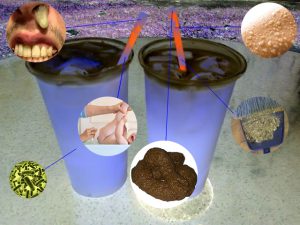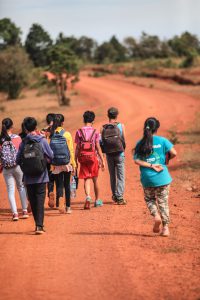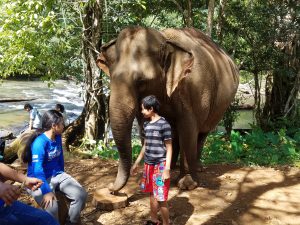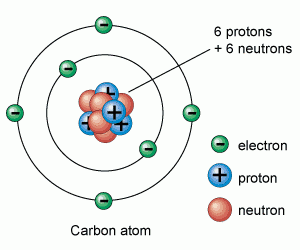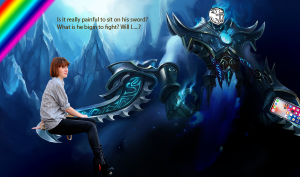In 2018, from August to October, I had a seven weeks exploration of trying to stop using plastic in my school, but we realize that we cannot stop in 7 weeks because using plastic products is our habit now. If we definitely stop using plastic, you might have to throw my computer away too, because it is plastic. Yes, I am serious. So, in that seven weeks, we were trying to stop the single-use plastic such as plastic bags, straws, and bottle. I find out that everyone can’t really stop using plastic bags and bottle. Guess what? My favorite drink is packed in the bottle since they are the factories and I can’t drive to the company to tell them to stop it because it is their business. Also, the things about plastic bags. Most of the snack in Cambodia are packed in plastic bags. Some people really do love snack. What should they do? (Stop eating snacks?) Moreover, plastic bags are now very convenience in my country. People are just lazy sometimes. They don’t really use the reusable bags and bring their own food box when they buy their own food. Everyone already knows about the disadvantages of plastic, but why do they still use it? If you don’t believe me, let me ask you a question. Do you still use plastic? If yes, why? If no, forward my question to your friends. I think your answer might be yes.
Let me talk a bit more about plastic. Sometimes, the plastic affects you, but you just can’t really see it. Example, when you buy a hot soup noodle and you pack it back in plastic bag or styrofoam, the chemical of the plastic will release into your noodle and you can’t see it and you eat it at home. Sometimes, plastic doesn’t affect us, but it affects other marine lives such as turtle.
A turtle was pretty famous in a few years ago because of the plastic straw that stuck painfully in his nose. He was bleeding badly in his nose and he yelled a lot. I really pity the turtle. What about you? Some of the turtles don’t get nose stuck, but they confuse between plastic bags and jellyfishes. I think many turtles die because of that reason. Well, it’s also because of plastic trash that was thrown away by us humans.
But, now we are only focusing on our campus then another group will start further with the village near our school. We were searching for the alternatives that can replace plastic and it is good for the environment. We also collaborate with some of the organization. We know them by doing some research on the internet. Before meeting them, we had to send an email to them about our project and why we wanted to meet them. We collaborated with Better U and Only One planet. Better U use grass straw and Only One Planet sell bioplastics such as box for lunch packaging and other reusable product. We went to meet them to talk about their products and order some of them to show at our Sharation Day to show people what we were doing.
We also bought every student and staff a metal straw and a nylon bag because they have their personal stuff and they use them instead of plastic. Also, they can reuse them, so when they go to buy snacks, they can put their stuff inside the bag and they can use the metal straw instead of plastic straws. Our school calls a snack seller to come to sell snack at our school every Saturday, so she brings lots of snack and drinks such as sugarcane that come in with plastic cups, plastic handles, plastic caps, and plastic straws. Now, because of having the plastic exploration, the snack seller stop bring the sugarcane in cups. Instead, she brings a bucket of ice and a lot of plastic bottles that contain sugarcane juice in it. She doesn’t throw away the plastic bottle. Alternatively, she takes back the bottle and she reuses it when she comes to sell them to us again. So, when we buy the sugarcane juice, we need to bring our own bottle. For the snack and drink that come in with plastic wrapper since they were at the factory, we give them an excuse because we love snacks and we cannot stop it.
In week three, we were collecting all of the single-use plastic on our campus every day and see how many do we have. The number of the result is pretty big. In a week we have 2,750 trash. Most of the single-use plastic trash were the plastic bag, snack wrapper, and plastic straw. We have 2,750 single-use plastic trash in a week, so in a month we can have 11,000 and in a year, we can have 132,000 of single-use plastic trash. This is just in Liger campus, so what about the villages provinces and countries.
On 21, 09, 2018, we were doing a small activity on the assembly in our campus. Before getting into the point, we were doing some Q4S which mean questions for sugarcane. We asked them the easy questions, so we could get rid of sugarcane juice and we could get to the point. After they drank the sugarcane that we gave them in the plastic cup with plastic straws, we showed them some pictures. The first picture is the picture of the sugarcane that they are drinking. The second picture showed the reality of the drink that they just had. The picture is very disgusting. You can scroll down a bit to see the pictures. We were getting into the point. We told them why we don’t want them to use the plastic cups, straw, cap, and the handle when they bought sugarcane from the seller. Usually, they keep the straws in the open area, so the dirty and those bacteria might fly around and stuck on to it. Sometimes, when the sellers just change their kid’s diaper, they might not wash their hands yet. Also, about the cup. Sometimes, they hold the mouth of the cups before they hand it to us. It is very disgusting, right?
After we told them about our exploration and why we want to stop the single-use plastic, the single-use plastic in the campus decreases a lot.
To make it a bit worldwide, we created a facebook page to let other Cambodian people know about it. The Facebook page tells people to try to help our environment. To do that, they need to reduce using plastic. We also put some prizes to encourage them to USE the alternative to reduce the single-use plastic. They can post a picture of themselves during using another alternative that is not plastic. We will give them a point for a post. Our team will record the scores and will notify everyone every six weeks.
15 points: One keychain / One metal straw / One bamboo straw
25 points: Two keychains
30 points: One medium size fabric bag
50 points: One big size fabric bag
150 points: One small glass cup (300 ml)
200 points: One big glass cup (500 ml)
250 points: One metal box
350 points: One pencil case
400 points: One metal pencils and pens holder
500 points: One water bottle (500 ml)
1000 points: One backpack
We also share the Facebook page with our family and relatives and they said that it is a good idea.
So, if you wanna to join our project, you can just use the alternative that can replace plastic and share the idea with people around you and remember that plastic is easy to use, but they are difficult to destroy and it causes a very big problem.
Our Facebook page: facebook.com/noplasticcambodia/

